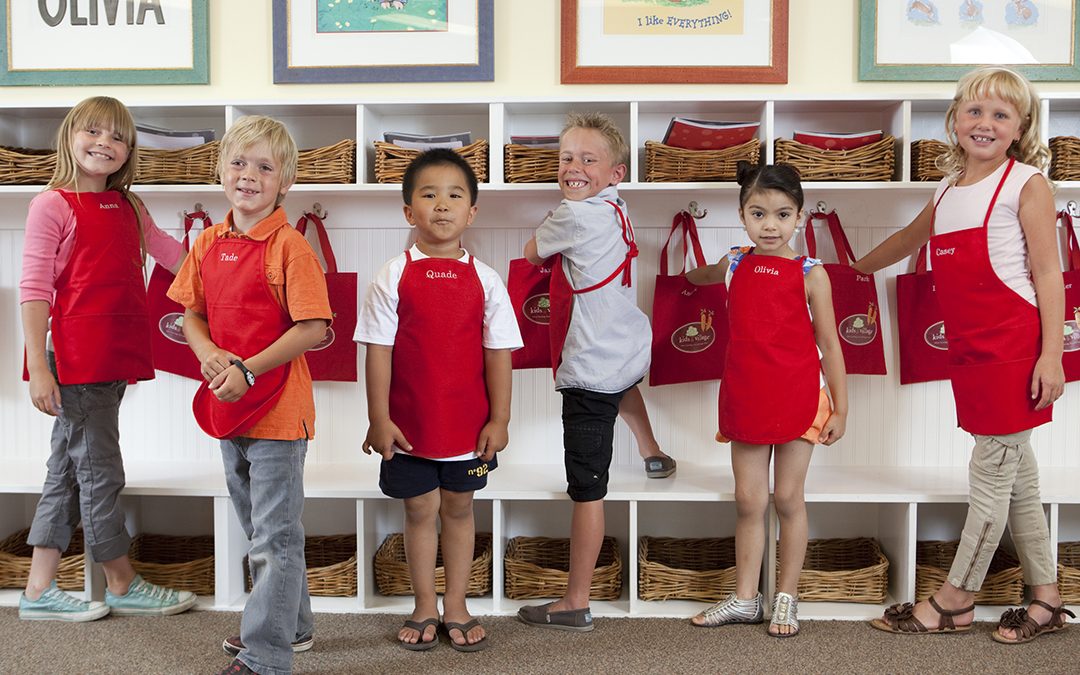Children are constantly exposed to new sights, sounds, and experiences, and some of them can be overwhelming and scary. Children pick things up quickly, but some of these experiences might leave them a little anxious and unsure.
Keep in mind, above all, that their anxiety is completely normal and can also differ from child to child. As your child develops, their fears will evolve. Babies and toddlers, for instance, have different fears from your preschooler, and older kids have an even more expansive list of things that make them nervous.
3 Common Childhood Fears and How to Help
Some childhood anxieties aren’t particularly surprising: loud noises, for one, still startle many of us grown-ups, so it’s no surprise that our children respond similarly. As we age, though, our fears start to get a little more complex. A baby will show signs of separation anxiety early on, and preschoolers usually haven’t completely grown out of that. So, first on our list:
1. I Want My Mommy!
Or Daddy or other guardian, but you get the point. They’re scared and anxious because they’ve just been put into an overwhelming environment that makes them want to run back to the comfort of your arms. Katie Hurley, a child and adolescent psychotherapist, says, “separation anxiety is a normal part of child development… Crying, tantrums and clinginess are all common symptoms of preschoolers struggling with separation anxiety.”
Combat those trends through consistency. Kids need stability. If the place that they’re going isn’t foreign, it’s not as scary. Warm them up to their new school or babysitter’s house by visiting it a few times with them before leaving them alone for the first time.
Create a morning routine with them that gives everyone enough time to tie their shoes and brush their hair without feeling rushed out the door. If you’re having a hard time waking up that extra twenty minutes early, prepare the night before by repackaging lunches and getting backpacks ready by the door. Rushing only sets the stage for everyone to be stressed out.
Have a goodbye ritual. Come up with some fun, special, just-for-you-two kind of way to say goodbye. It distracts them, making them replace that negative emotion with something more fun (a principal that comes in handy for other fears, too). Make up a special handshake, or always give them a hug, a kiss, a hug, a kiss, a high five, another kiss, and a goodbye. The ritual will set them on the right track for the rest of the day, ending in the surety that you’ll be back soon.
2. Afraid of the Dark
Above just being anxious about being separated from their parents, your child may begin fearing just being alone, which is a major contributor to the most common fear of all: the dark.
Things that go “bump” in the night can stimulate a preschooler’s developing imagination. They’ve learned now that sometimes, unexpected things happen, and who’s to say the new surprise won’t be lurking in their closet?
Break it down to bite-size pieces. If that thing they’re imagining under the bed is actually a cuddly, fuzzy bunny, they’ll have a much easier time falling asleep. Ask them to tell you about the scary thing they’re imagining and help them replace it with a much softer, happier image. Dr. Tamar E. Chanksy, author of Freeing Your Child from Anxiety says, “By creating a competing emotion, you help burn out the anxiety.”
Make the dark a friendlier place by cozying up and reading together with a flashlight. Play a game in the dark. Or, if they’re really unsure of those murky spaces, run into them together, make five funny faces at each other, and run right back out.
3. Animals
If you’re an animal-lover, it might be disappointing that your little one runs to you and desperately clings to your legs anytime Fido walks by. Start by understanding that their fear isn’t explicitly rational; it’s an evolutionary instinct that protects our early ancestors from harm. While you may know that the snippy little Pekinese next door is no threat, you can’t necessarily talk your child out of their instinct to run away. Similarly, be careful about what you do say: don’t reinforce your child’s fears. Saying things like, “careful or she might bite you” will only make that pooch seem even scarier than they were before.
Go to a dog park and talk about what you see. If they’re up for it, walk around. If they’re feeling especially bold, they might even ask to pet one! Make sure to ask the owner first, but when they say “yes,” help your child to start by petting them on the back. A dog’s drooly grin might just look goofy to you, but at eye level, those sure are a whole lot of sharp teeth.
WebMD put together a pretty comprehensive list of things to try, but they reiterate that there’s one important don’t: don’t buy a new pet. That’s too much, too soon.
General Advice
Helping your child means being a supportive parent. At the end of the day, a child just needs to feel loved. Acknowledge the fear. Praise them for doing something in spite of their anxiety. Encourage (don’t push) them to try those scary things. Positive reinforcement helps enable your child’s confidence; that inevitably helps them independently handle those fears head-on.

